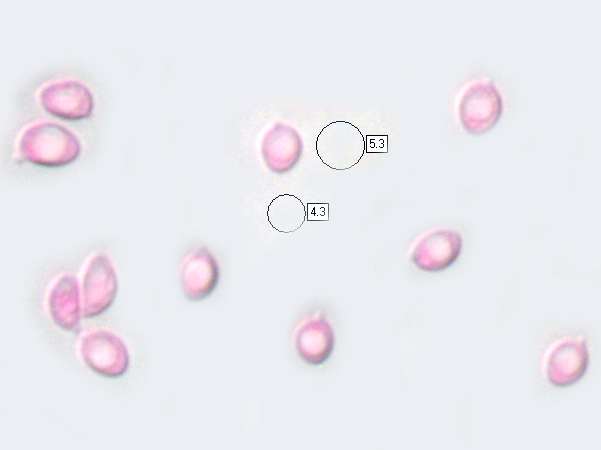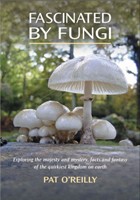Tricholoma album (Schaeff.) P. Kumm. - White Knight
Tricholoma album (Schaeff.) P. Kumm. - White Knight
Phylum: Basidiomycota - Class: Agaricomycetes - Order: Agaricales - Family: Tricholomataceae
Distribution - Taxonomic History - Etymology - Identification - Culinary Notes - Reference Sources
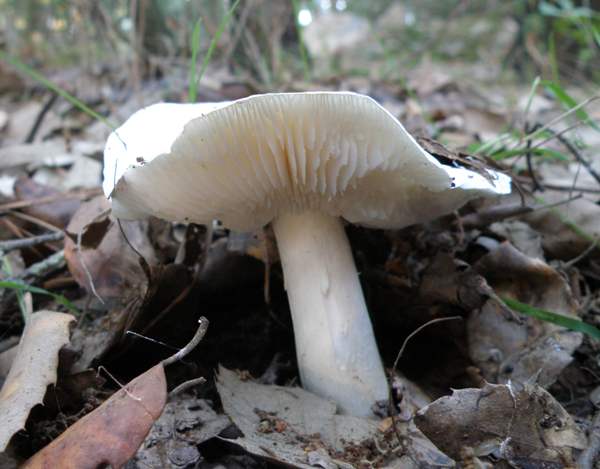
Although not always a pure white (and never in shining armour), this is a very pale 'knight' and therefore easy to find against the dark background of a forest floor… unless it has been snowing.
Distribution
This neat and conspicuous mushroom can be found in both broadleaf and coniferous woodland. In Britain and Ireland this is rather an uncommon find, but in Scandinavia this species is abundant in the spruce forests that dominate the landscape.
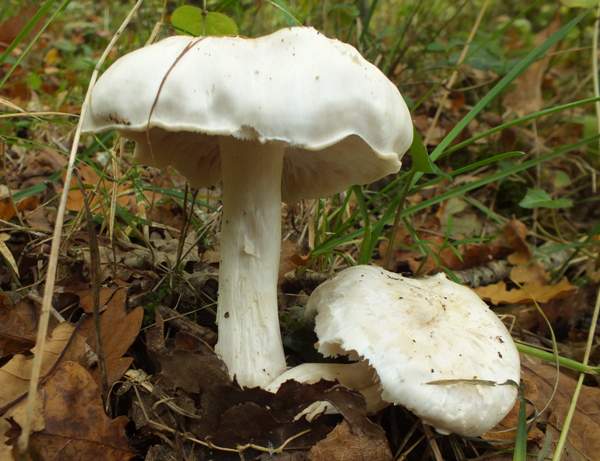
Tricholoma album occurs throughout mainland Europe, from northern Scandinavia down to the Mediterranean and the southern shores of the Iberian Peninsula, but its presence in North America is currently (autumn 2013) unconfirmed.
Taxonomic history
When Jacob Christian Schaeffer described this woodland mushroom in 1770 he gave it the binomial scientific name Agaricus albus. (In the early days of fungus taxonomy most gilled fungi were placed into a gigantic Agaricus genus, since made more manageable by redistributing most of its contents to other new genera. The genus Agaricus now houses only the 'true mushrooms'.)
A century later, in 1871, German mycologist Paul Kummer renamed this species Tricholoma album, which is the name by which mycologists generally refer to it nowadays.
Synonyms of Tricholoma album include Agaricus albus Schaeff., and Tricholoma raphanicum P. Karst.
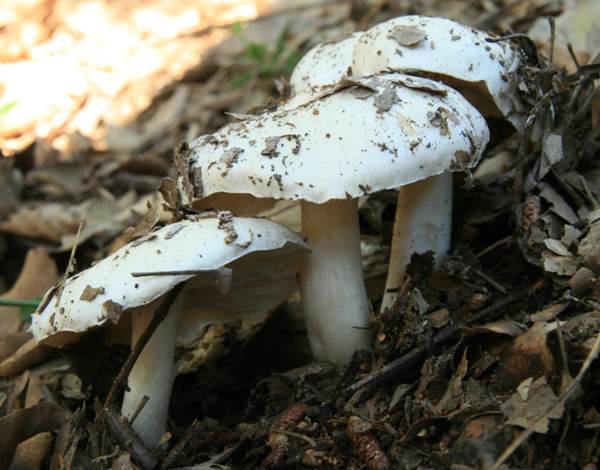
Etymology
Tricholoma was established as a genus by the great Swedish mycologist Elias Magnus Fries. The generic name comes from Greek words meaning 'hairy fringe', and it must be one of the least appropriate mycological genus names, because very few species within this genus have hairy or even shaggily scaly cap margins that would justify the descriptive term.
The specific epithet album is not at all difficult to unscramble: it means white.
Identification guide
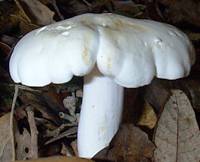 |
CapInitially conical with an inrolled margin, later convex or flattened with small umbo and usually a wavy margin; usually dry and smooth; white or with a pale yellow tinge, ochre-yellow towards the centre when mature; smooth; 4 to 10cm across. |
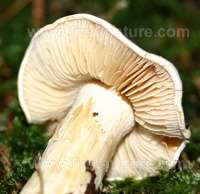 |
GillsWhite or pale yellow; with coarsely toothed edges; of uneven lengths and moderately distant; sinuate (notched very close to the stem). StemWhite to pale yellowish-brown, pruinose towards the apex and often with fine longitudinal fibrils near the base; cylindrical; 3 to 6cm long, 0.8 to 1.5cm diameter; no stem ring. |
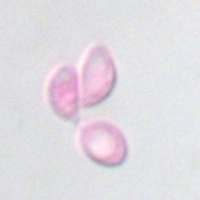 |
SporesBroadly ellipsoidal, smooth, 5-7 x 3.5-4.5μm; with a pronounced hilar appendage; inamyloid. Spore printWhite. |
Odour/taste |
Strong odour of radish when crushed; slight taste of radish. (Note: this is a poisonous species.) |
Habitat & Ecological role |
Mycorrhizal, in broadleaf and coniferous woodland. |
Season |
Usually June to October in Britain and Ireland, but if there are no heavy frosts then White Knights can appear as late as November and even into December. |
Similar species |
Tricholoma stiparophyllum is very similar in macroscopic characteristics, but with a strong and unpleasant sickly-sweet odour; there are also small differences in the microscopic characters of these two mushrooms, which some authorities currently treat them as the same species. |
Culinary Notes
The White Knight is known to be toxic and should definitely not be collected for the pot. Even when thoroughly cooked these chunky mushrooms cause serious gastric upsets if they are eaten.
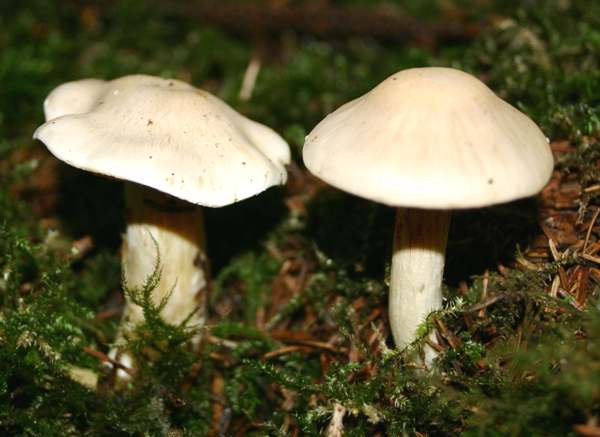
Reference Sources
Fascinated by Fungi, 2nd Edition, Pat O'Reilly 2016, reprinted by Coch-y-bonddu Books in 2022.
Kibby, G (2013) The Genus Tricholoma in Britain, published by Geoffrey Kibby
Dictionary of the Fungi; Paul M. Kirk, Paul F. Cannon, David W. Minter and J. A. Stalpers; CABI, 2008
Taxonomic history and synonym information on these pages is drawn from many sources but in particular from the British Mycological Society's GB Checklist of Fungi.
Fascinated by Fungi. Back by popular demand, Pat O'Reilly's best-selling 450-page hardback book is available now. The latest second edition was republished with a sparkling new cover design in September 2022 by Coch-y-Bonddu Books. Full details and copies are available from the publisher's online bookshop...
